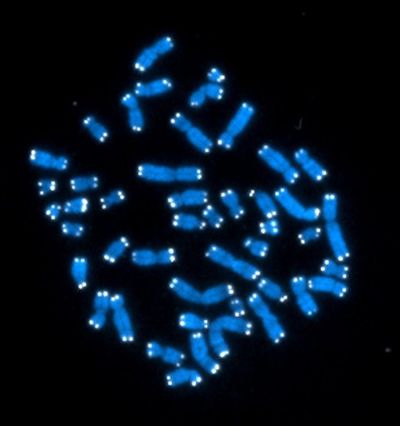This column reflects the opinion of the writer. Learn about the differences between a news story and an opinion column.
Front Porch: Genomics exciting window into us all, Stefanie Pettit writes

We used to call it genetics, and, for most of us, it didn’t get more complicated than maybe learning a little about Gregor Mendel’s study of peas in science class and how hereditary traits could be predicted. But mostly it was about contemplating the likelihood our children would inherit Mom’s blue eyes or Grandpa’s big ears.
I have my own teeny, tiny little stake at the lowest level of this research, which is why I’m focusing on it this week. I’ll elaborate.
As science moved forward, genetics evolved into the more expansive genomics, and in 2003, when the international Human Genome Project was completed, the accomplishment got its own day of celebration through concurrent resolutions in Congress. April 25 was declared National DNA Day. The idea was that students, teachers and the public would use the day to both learn about and celebrate advances in genomic research and take a look at how these might impact their lives.
I know, it sounds like a big science nerd event. But it really is a big deal – and if it’s not, it should be.
Scheduled celebrations or official events really do take place in the nation – most notably in the southeast states. Apparently we in the northern tier states and the Pacific Northwest had nothing official on the calendar when April 25 arrived this week, but I’m happy to report that for Randall James’ students in North Central High School’s Institute of Science and Technology, DNA is front and center every day. They most recently worked at sequencing DNA from 3,400-year-old bone fragments from food collected by scientists along the Columbia River for the Spokane Tribe.
Science is cool.
Also available this week was an international essay contest for students (with nice cash awards). This year’s topic: Choose one modern example of gene therapy and describe the disease or condition researchers are attempting to treat and explain how the therapy/approach might repair its underlying cause. I have no doubt that the winning essayists will surely merit their reward.
According to the National Institutes of Health, the Human Genome Project had as its goal providing researchers with tools to understand the genetic factors in human disease and paving the way to develop new strategies for diagnosis, treatment and prevention. More than 1,800 disease genes have been discovered, more than 2,000 genetic tests have been developed for assorted conditions and a gene suspected of causing an inherited disease can be found in a matter of days, rather than the years it took before genomic sequencing was achieved.
Like I said, a big deal. But just as all politics is local (according to the late great Thomas P. “Tip” O’Neill, former Speaker of the House), so, too, is genomics, especially if you have a disease or condition that may be cured or prevented through genomic research. Or to shrink the science even further, it is making popular inroads into all of our lives, in the comfort of our own homes.
I give you the spit test. Advertised everywhere, there are services that will provide for you an analysis of your DNA through a saliva sample and, of course, a fee.
Our oldest son had noted some years ago that a photo he saw of one of my grandfathers, who died before I was born, reminded him of some people he knew from Turkey. Although I know my lineage only up through my grandparents, all of whom were born in other countries, as was my father, I had heard no stories about anyone from Turkey. So imagine my surprise when for Christmas my husband presented me with a DNA spit kit of my very own.
I was pretty sure I knew what it would reveal – but, just like in the TV commercial advertising the kit – surprise! Two-thirds of my pie chart was as I thought it would be. But 33 percent showed Scandinavian heritage. I never saw that coming, as there was nary a whisper in the family of anything Norse. Or as my youngest son said gleefully: “We be Vikings!”
What I also didn’t see coming was a listing of possible relatives provided for me from a group of people who had also taken the test. As it turns out, one is in fact my first cousin and another one is the son of another first cousin. OK, I’m getting a little more interested now, though I’ll not be making a career out of pursuing this.
National DNA Day has come and gone this year now, and its significance goes way beyond my own little aha! moment. Still, I think I’ll have a little belated celebration and call my first cousin, a person I haven’t talked with since I was a child.
After all, it does appear we have a lot in common, at least at the cellular level.
